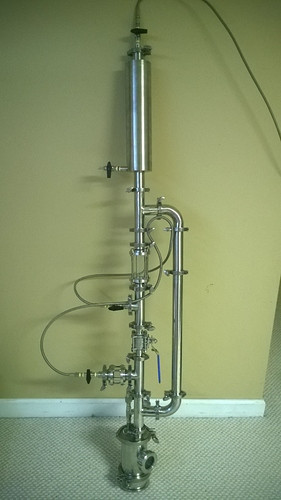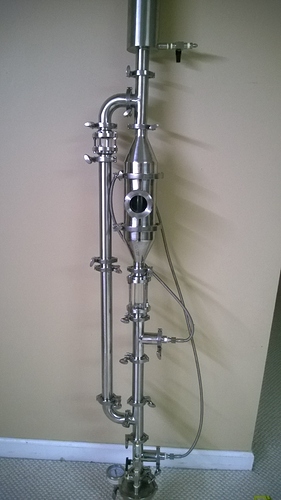This is my 2 ounce sample size ORC Extractor.
This unit is capable of processing around 2 ounces of biomass at one time. However due to the nature of the process, the sample can be replaced with new material.
The solvent volume is around 700ml.
This system is able to be used with high pressure, vacuum, or ambient pressure. It can be run active or passive.
By changing a single valve, the mode of operation is selected. When the valve is closed, the system is in ORC mode. When the valve is open, the system is set for standard CLS operation.
When a seperate collection container is added, the system can be used to dry biomass, and recover solvent. Straight distillation from liquid (for purification) can be accomplished, in the same manner.
#orcextractor #orctek #orctech #orctekextractor #orctechextractor

